1/32 Dragon Bf-110C-7
This was a review in 2009 when the Dragon Bf-110C-7 was first released. Overall, this kit is an ill-fitting pain in the posterior which, if you persist with it, will turn into a very good-looking model in the end. The trick with this kit is to test fit everything three times before gluing once. While it appears to be a state-of-the-art kit, it is really a limited-run kit with state-of-the-art molding of parts, though not accurate state-of-the-art molding of too many parts. You get better fit from most MPM kits. I used kit decals and decals from a re-release of the older Revell Bf-110, to do a C-7 schnellbomber of SKG-210 in the Battle of Britain. If you have one of these kits, do read my full review at M2 to know what you're getting into and how to get through the minefield without losing anything vital. The good news is, you can do any C-series sub-type with this kit.
The Bf-110C was flown in limited numbers during the Polish campaign, where the fact that it could not dogfight single-engine fighters was quickly discovered. That anyone had ever thought such combat was possible was amazing. The airplane was heavy, and even with the DB 601 engine was slow to accelerate and climb, though it could out-dive just about everything else and had a decent zoom capability. When the pilots stuck to the vertical plane - employing dive-and-zoom tactics - they were much more successful. Future ace Wolfgang Falck led the most successful unit, I/ZG 76, which claimed 31 kills during the campaign, of which 19 were confirmed.
During the campaign in the West following the German assault on France and the Low Countries on May 10, 1940, the Bf 110 demonstrated its capability as a strike aircraft, with ZG 1 claiming 26 Dutch aircraft destroyed on the ground at Hamstede airfield on May 10. However, when the Bf-110s ran up against the RAF in the air on May 15, their previous success is was tempered by the loss of nine Bf 110s, a sign of times to come over Britain. With a total loss of 60 Bf-110s, the Western Campaign demonstrated that the aircraft was vulnerable in hostile skies to well-flown single-seat fighters like Hurricanes and Spitfires.
Erprobungsgruppe 210 was formed on July 1, 1940 at Koln-Ostheim under the command of Hauptmann Walter Rubensdörffer, a Swiss true believer in Nazism, who had migrated to Germany following Hitler's rise to power and joined the Luftwaffe, where he gained a reputation as a ground-attack specialist during the Spanish Civil War, where he led 3./J 88 which used the He-51B in the development of schlactflieger tactics.
The unit was given the task of operational test of the Bf-109E and Bf-110C as fighter-bombers, and the development of suitable tactics. The legend of Erpr.Gr.210 is that the aircrews assigned were all “specialists,” which is not true. 1.Staffel, which was to be equipped with the new Bf-110C-4/B, a version with a fuselage mounted bomb rack capable of carrying two SC 500 bombs on a paired ETC 250 rack under the fuselage, was formed from I./ZG1. 2.Staffel, also to be equipped with the Bf-110C-4/B, was formed from 3./StG. 77, and 3.Staffel, which was equipped with the Bf-109E-4B capable carrying one SC 250 on a centerline rack, was formed from 4./JG 186. Some crews were assigned straight in from training, including Leutnant Erich Beudel and his Bordfunker, Obergefreiter Heinrich Diemer, and Uffz. Werner Neumann and his Bordfunker, Obergefreiter Karl Stoff.
The heavy commitment of the unit during the Battle of Britain would take its toll: four commanding officers would be lost in action between August 15th and October 5th 1940. An indication of the level of combat experienced by Erpr.Gr.210 is seen in the fact that four awards were made of the Knights Cross of the Iron Cross, the most for any single Gruppe in the Battle.
August 12 would prove to be the busiest day of the Battle of Britain. Erpr.Gr.210 left Calais-Marck at 0930 to attack the radar stations around the south coast of England. Heading low over the Channel, the unit split into four formations. Gruppenkommandeur Rubensdörffer led the four Bf-110C-4/Bs of the Gruppenstab toward the station in the tiny village of Dunkirk, north of Canterbury; Oberleutnant. Otto Hintze led the Bf-109E-4/Bs of 3.Staffel to the Dover station; Oberleutnant. Wilhelm-Richard Rossiger led 2.Staffel's Bf-110s towards Rye, with Oberleutnant Martin Lutz leading 1.Staffel's Bf-110s to the Pevensey station. All four stations were hit, but the masts were not toppled. All except Dunkirk were temporarily put out of action, but all were back in operation before the end of the day. All aircraft of Erpr.Gr.210 returned to Calais-Marck. So far, the tactic of using the fast Bf-110 at low altitude, operating below the radar screen, was proving effective.An hour after their return to Calais-Marck, Erpr.Gr.210 headed for Manston, on the south-eastern tip of Kent, joined by Dornier 17s of KG2. Coming in under the radar, the formation made its approach unopposed. 65 Squadron managed to take off as the raid was in progress. Heading home, Erpr.Gr.210 was attacked by 54 Squadron Spitfires and Hurricanes of 501 Squadron. One Bf-110C-4/B of 1.Staffel was slightly damaged.
The third mission of the day came three hours later, when Erpr.Gr.210 hit Hawkinge airfield with a precision attack. Although considerable damage was done to the airfield, it was not put out of action. All aircraft of the unit returned to Calais-Marck, ending the most successful day in the history of Erpr.Gr.210.
Bad weather on August 14 limited the unit to a second attack on Manston. August 15, which dawned clear, would turn out to be the day remembered by the Luftwaffe as “Black Thursday,” and the darkest in the history of Erpr.Gr.210.
At 1820, Rubensdörffer led the Gruppenstab and all three Staffeln on a raid against Kenley airfield, with JG 52 providing Bf-109s for escort. Over the Channel, one Bf-110 from 2.Staffel turned back due to mechanical problems, leaving 14 Bf-110C-4/Bs of the Stab and 1. And 2.Staffeln and the eight Bf-109E-4/Bs of 3.Staffel. On the way in, the escort became detached and turned back. Erprobungsgruppe 210 continued on alone.
As he approached the target over Seven Oaks, for some reason Rubensdörffer lined up and dived to attack Croydon, not Kenley, just as the last Hurricanes of 111 Squadron lifted off from Croydon, while 32 Squadron was scrambled from nearby Biggin Hill.
Croydon, the pre-war civil airport for London, was inside the line of Greater London that the Luftwaffe was prohibited from attacking at this time. While the airfield was now used by the RAF, it was considered off-limits. Erprobungsgruppe 210 sighted the Hurricanes climbing out of Biggin and Kenley as Rubensdörffer led the unit down on Croydon. The field was hit hard, and as the three staffeln came off the target and set about climbing to re-group and head for home, they knew that two enemy squadrons were in pursuit. Both RAF squadrons hit the Germans as they attempted to reform, and the Bf-110s formed “defense circles” for several minutes, but upon breaking for home the losses started.
The four Bf-110s of the Gruppenstab came under attack by 111 Squadron.
Rubensdörffer was hit but the Bf-110 kept flying. Taking the airplane so low that he was maneuvering around farm houses, Rubensdörffer streaked for the coast. A Hurricane managed to get within range as the 110 lifted slightly to go over a church steeple and set the fleeing German afire. Moments later, as the flames engulfed a wing, Rubensdörffer and his Bordfunker, Obergefreiter Richard Kretcher were killed in the explosion as they hit ground just short of a farmhouse. At almost the same time Gruppenadjutant Oberleutnant Horst Redler was shot down. He died three days later of his wounds while his Bordfunker, Obergefreiter Johann Werner became a POW. Hit badly, Gruppe Technicsoffizier Leutnant Karl-Heinz Koch made a successful belly-landing, both he and Bordfunker Unteroffizier Rolf Kahl being captured. Three more Bf-110's of 1.Staffel were shot down. Leutnant Horst Marx, who tried to help Rubensdörffer, was shot down by a Hurricane and abandoned his Bf-109E-4/B to become a POW. 2.Staffel lost two Bf-110's, with three of the four crew being captured. The two RAF squadrons suffered no losses in the action.
Had more units of the Zerstörerwaffe been employed in the strike role like Erpr.Gr.210, particularly during the airfield attacks in August, the outcome of the Battle of Britain might have been different, since a speeding Bf-110 at low altitude was a very difficult catch for a Hurricane or Spitfire without a lot of luck being involved, as happened on August 15.
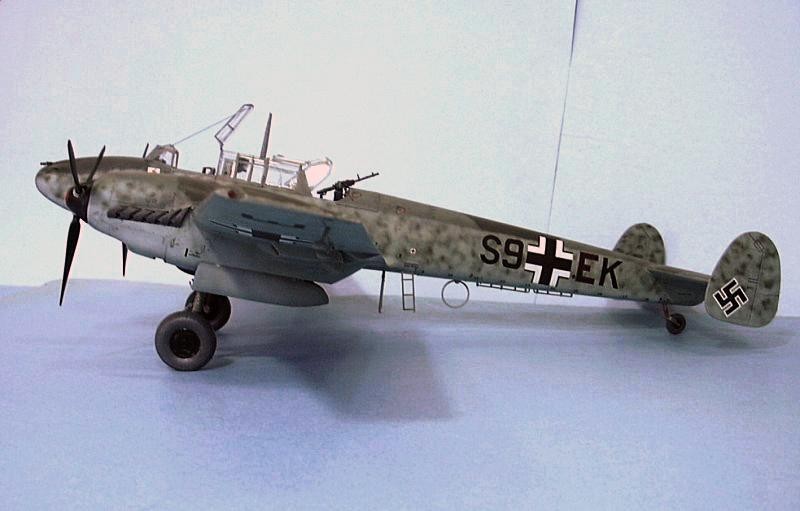
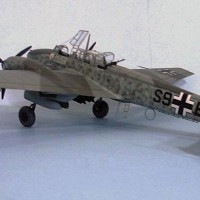
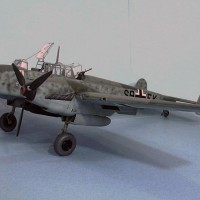
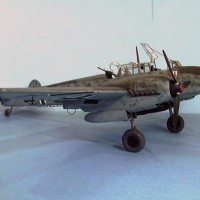

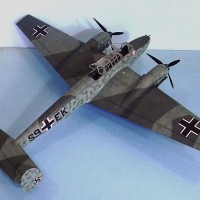

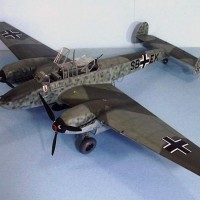
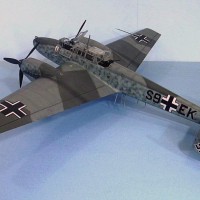
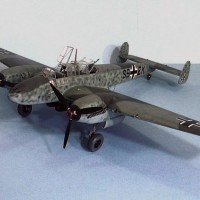
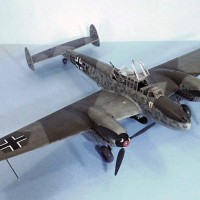
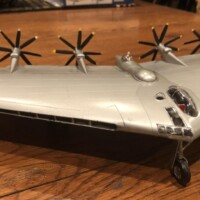
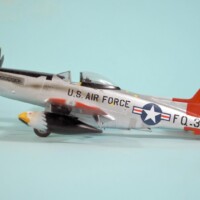
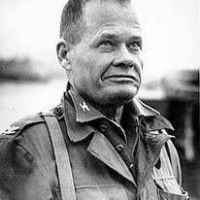
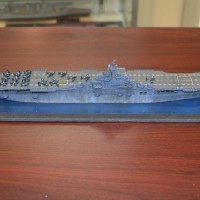
Tom, Nice looking model and great history read. The first model I ever built (at the age of 8 with the help of my dad) was a monogram 1/72nd scale '110-no paint, just dark green plastic with decals. It hung proudly from my bedroom ceiling for years until it met its demise from my little brothers “unprovoked” Lincoln Log anti aircraft fire attack… A swift Blitz Krieg was put into action, resulting with my brother’s “clear” understanding that any further downing of my models would result in his complete annihilation.
As above, always a history behind the build.
Lovely job done there Tom.
Your description of Dragon's engineering expertise sounds an awfully lot like KittyHawk's Lightning II that I finally I shelved before something ugly happened. Nice-lookin' Bf-110.
Tom...Nicely done model. How do you find the time to build so many models while doing the extensive research and history? Both you modeling skills as well as your historical research commitment are impressive.
Self (un)employment. 🙂
But a lot of what you post are previously built examples, correct? Nobody's THAT prolific (are they?).
(Ed McMahon voice): you are correct, sir!
Beautiful, Tom. Where do you find room for those 1/32 monsters?
Out at Chino.
Well, whenever it was built and photographed, it's an impressive model (as always).
Well, Tom, my build of this kit has been almost completely (but not totally) hassle free. All major airframe parts, & interiors, engine, wheel bays, etc ALL fit like a Tamiya kit - IF YOU FOLLOW THE INSTRUCTIONS. (Which are only just adequate, lacking colour calls and some details to add..)
The one hassle if the panels around the exhausts. I'm still trying to edjamacate all of them into place with the cowl pieces and not get a horrid gap. (I'm using after market exhausts and they are the prime suspects for this problem arising...) I'll post some more pix once that's done and she's decalled.
One other hassle - the under-fuselage cover between the wings. I tried all sorts of fancy ideas but found the best fit was to add after the Spars, BEFORE the wings and get the wings on ASAP while it's still "malleable." Use quick setting glue on the wings to this piece and press the alignment and hold. It'll take in a few minutes and works just fine.
Once that's all set apply glue to the rest of the wing join and align...& Roberts yer mother's brother!
Cowlings SOLVED! My own fault as i suspected- Mount the engine bearers exactly as suggested and you'll find that the bottom arms to the firewall are a smidgeon too low and do not easily fit into the slot for them. I shave a mm or so off and VOILA! It all fitted together. I've just finished glossing her up for decalling.
Brett
I hope you'll be showing us the results of all this effort.
Pix will be following soon - (back to work tomorrow!)
BTW, I forgot to add...That is a SERIOUSLY nice job you managed on yours.
You continually refer to Erprobungsgruppe 210 flying Bf 110 C-4/Bs. This is incorrect. They flew Bf 110 'D-0/B's, 'D-3's, 'C-6's (with the 30 mm. Kanone, and in the latter part of the Battle of Britain, the 'E' variant.
Only four Bf 110 C-4/Bs were ever built, and they were brought to account as C-7s...